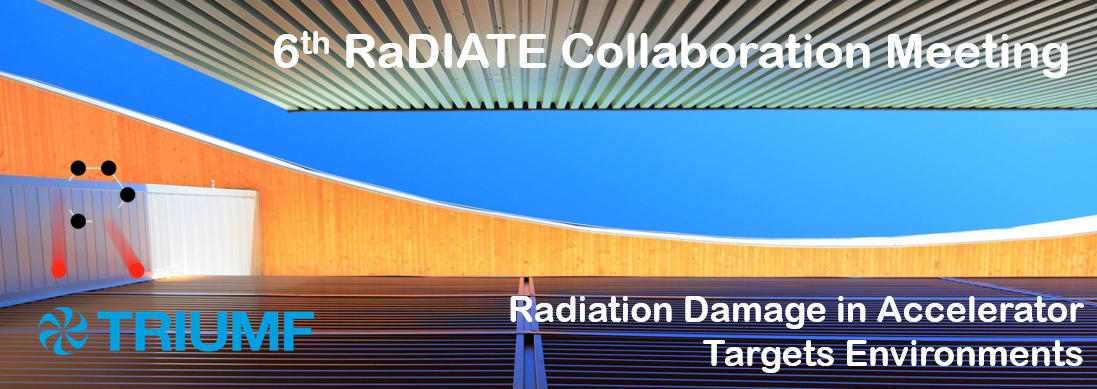Speaker
Dr
Sujit Bidhar
(Fermi National Accelerator Lab)
Description
Some of the NT02 target fin made up of isotropic POCO graphite grade has developed crack and fractured after few years of operation. The highly energetic pulsed proton beam with small beam sigma would create thermal stress wave as well as radiation damage such as displacement damage, void formation, swelling, gas formation among few. A complex interaction of dynamic loading due to beam, material degradation due to irradiation are thought to have caused such failure. Here we present a numerical simulation to capture combined effect of swelling and dynamic effect of thermal stress wave due to beam heating, to explain the failure of target. An empirical formula has been developed to take into account swelling as a function of temperature and proton fluence and has been implemented in commercial finite element code. Extensive X-ray diffraction (XRD) are done on fractured surface to understand lattice parameter change due to irradiation and the parameters of the empirical model are adjusted accordingly. Simulation results show swelling plays a major role in elevating stress state in the material closer to failure strength while the pulsed beam heating introduces fatigue loading that would explain brittle fracture emanating from inside of the material and propagating outward. Such empirical formula can be used as a predictive tool to estimate the service life of future multi-megawatt neutrino targets and targets in other accelerator environments.
Primary author
Dr
Sujit Bidhar
(Fermi National Accelerator Lab)
Co-author
Mr
Patrick Hurh
(Fermi National Accelerator Laboratory)

